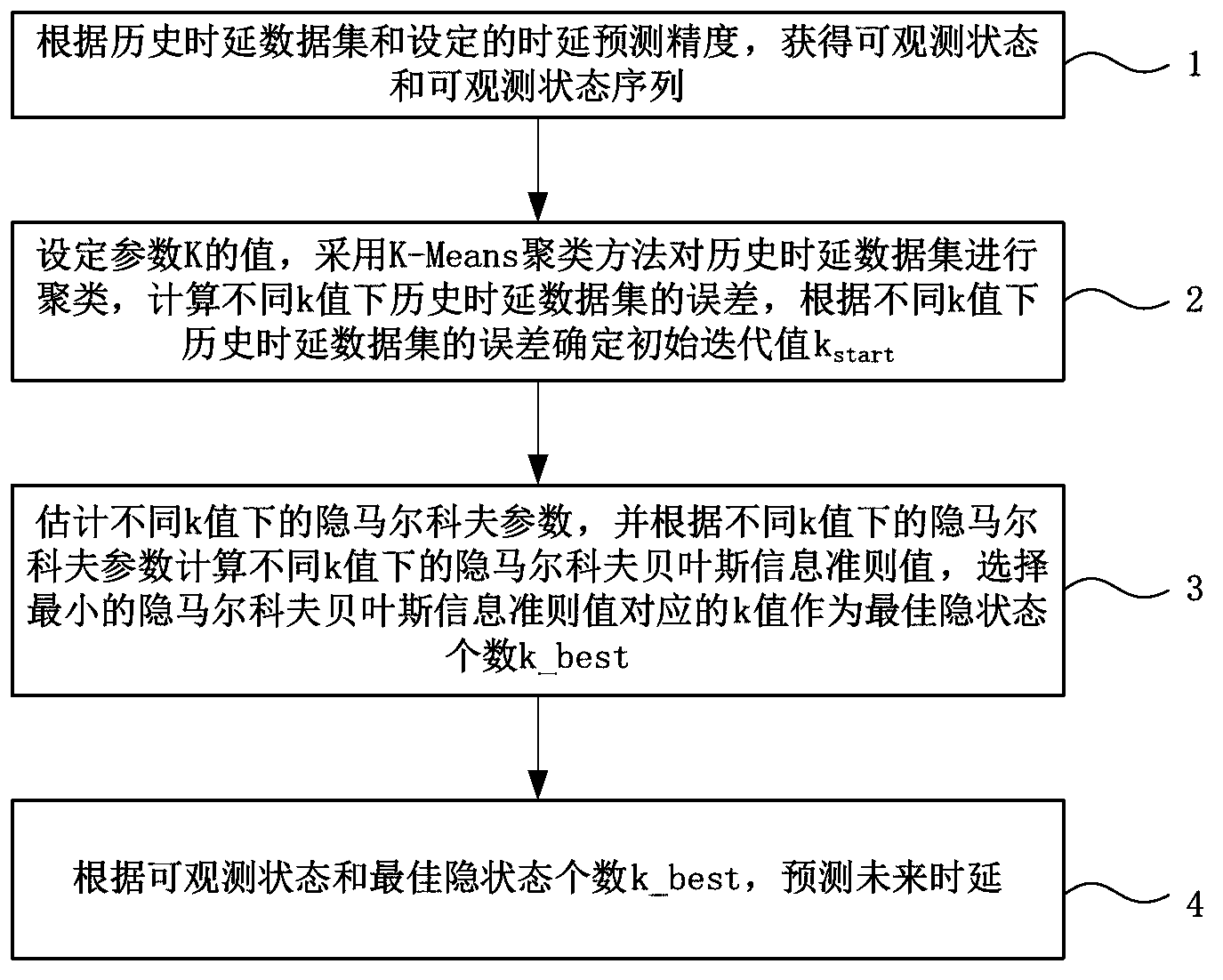Hidden-Markov-based Internet network delay forecasting method
A prediction method and technology of network delay, applied in data exchange network, digital transmission system, electrical components, etc., can solve problems such as high delay requirements
- Summary
- Abstract
- Description
- Claims
- Application Information
AI Technical Summary
Problems solved by technology
Method used
Image
Examples
Embodiment 1
[0058] figure 1 It is a flowchart of Internet network delay prediction method based on Hidden Markov. Combine below figure 1 The principle of the method provided by the present invention is described. like figure 1 Shown, the Internet network delay prediction method based on Hidden Markov provided by the present invention comprises:
[0059] Step 1: According to the historical delay data set and the set delay prediction accuracy, obtain the observable state and the observable state sequence.
[0060] This process includes the following sub-steps:
[0061] Sub-step 101: Determine the maximum time delay t in the historical time delay data set max and minimum delay t min .
[0062] Sub-step 102: according to the formula Calculate the number of observable states; where, N is the number of observable states, I is the set delay prediction accuracy, and [·] is the rounding operation.
[0063] Sub-step 103: Establish N delay intervals I j =((j-1)I,jI], where j is the serial...
Embodiment 2
[0084] The implementation process of the present invention will be described below by taking actual delay data as an example. In this embodiment, the historical time delay data sets are: 21.7867, 16.8299, 27.0571, 20.2741, 40.5288, ..., a total of 700,000 pieces of data, and the unit is milliseconds. The set delay prediction accuracy I=10 milliseconds.
[0085] Step 1: According to the historical delay data set and the set delay prediction accuracy, obtain the observable state and the observable state sequence.
[0086] Sub-step 101: Determine the maximum time delay t in the historical time delay data set max =491.2745 and minimum delay t min =0.0569.
[0087] Sub-step 102: according to the formula N = [ 491.2745 - 0.0569 10 ] + 1 = 50 Calculate the number of observable states, then the number of observable ...
PUM
 Login to View More
Login to View More Abstract
Description
Claims
Application Information
 Login to View More
Login to View More - R&D
- Intellectual Property
- Life Sciences
- Materials
- Tech Scout
- Unparalleled Data Quality
- Higher Quality Content
- 60% Fewer Hallucinations
Browse by: Latest US Patents, China's latest patents, Technical Efficacy Thesaurus, Application Domain, Technology Topic, Popular Technical Reports.
© 2025 PatSnap. All rights reserved.Legal|Privacy policy|Modern Slavery Act Transparency Statement|Sitemap|About US| Contact US: help@patsnap.com



